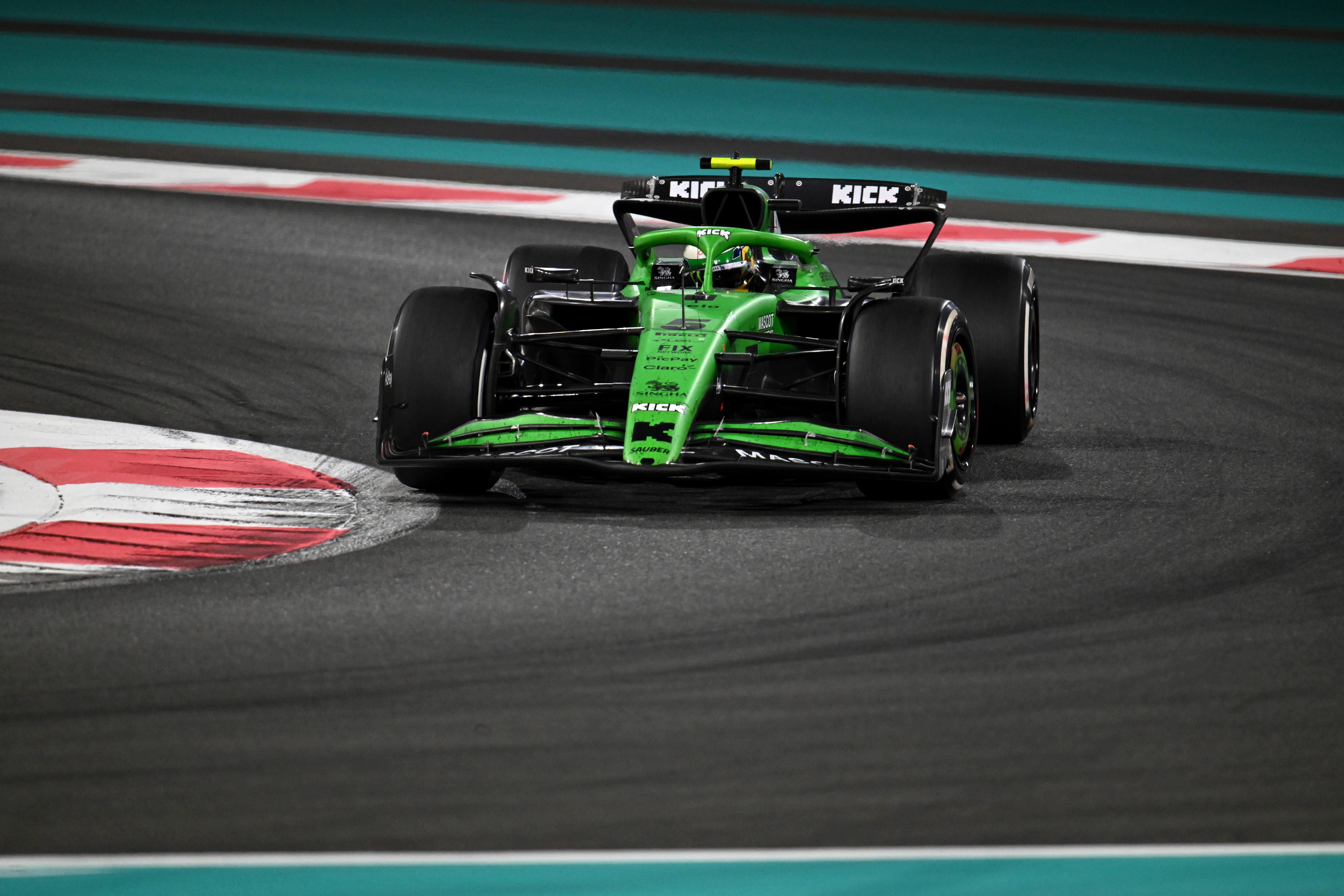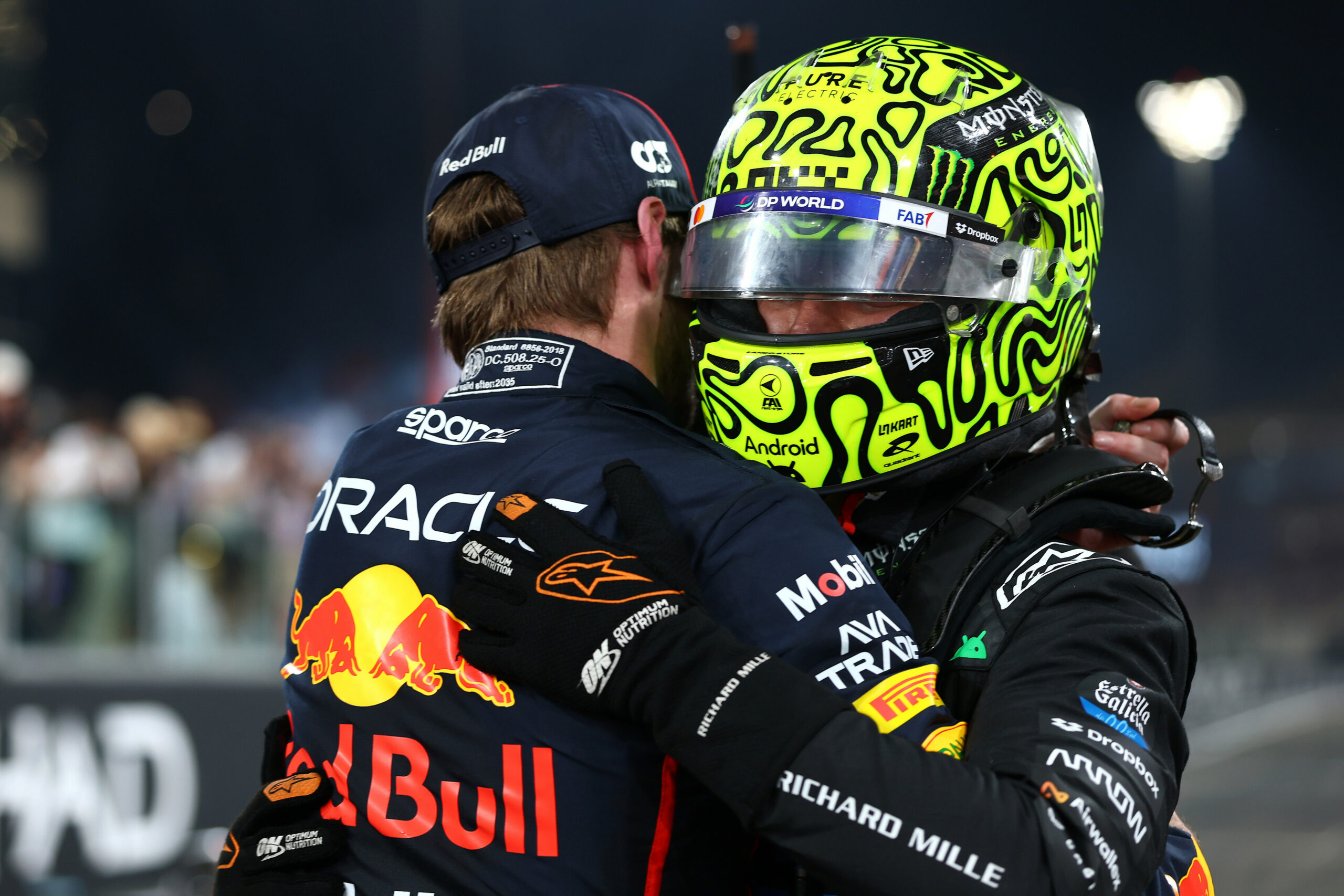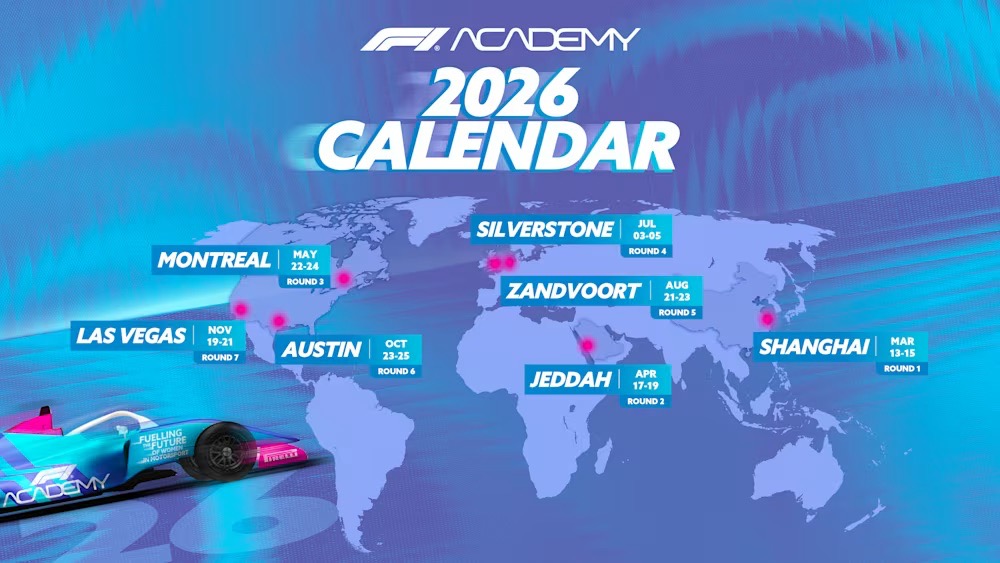Red Bull team principal Christian Horner has opened up about Max Verstappen’s aggressive 3-stop strategy and the predicament of pitting him for hard tyres under the late Safety Car at the F1 Spanish GP.
Lining up in third, Verstappen bolted on a set of used softs for his opening stint in Sunday’s race. With a superb launch off the line, the Dutchman overtook Lando Norris into Turn 1. Although the Brit managed to get his position back, the reigning world champion cut his first stint rather short and leapfrogged both McLaren drivers after the first round of pit stops.
Committing to a three-stopper, Verstappen kept the pressure on the McLaren duo, with at least a podium finish on the cards. Unfortunately, his fortunes took a turn for the worse following the retirement of Kimi Antonelli on Lap 55.
With no soft tyres available in viable condition, Verstappen found himself at a massive disadvantage on the hardest compound at the Safety Car restart. As his defence against Charles Leclerc proved futile, the Dutchman’s controversial collision with George Russell earned him a costly 10-second time penalty. He finally took the chequered flag in a lowly tenth place.
Red Bull committed to a 3-stop since beating McLaren in a straight fight wasn’t possible
Speaking in a print media session after the race, Christian Horner reflected on the 3-stop strategy Red Bull chose for Verstappen during the F1 Spanish GP and the rationale behind their call.
Stating that it was impossible to challenge McLaren following the conventional strategy, Horner revealed that they decided to commit to the 3-stop in the early stages of the race. With the Woking-based outfit opting to not cover Verstappen, the Brit admitted that the Dutchman’s blistering pace had momentarily made them hopeful about taking the fight to Piastri and Norris.
Nevertheless, Horner highlighted the MCL39’s superior tyre life and added that the McLaren drivers’ strong second stint on the mediums forced them to utilise Verstappen’s last viable set of softs to attempt a potential undercut.
“Obviously, the way that the race was panning out, we elected to take a 3-stop. We committed to it pretty early on because we saw that the pace advantage and the tyre advantage that McLaren had. A straight fight wouldn’t be possible.
“So we committed on Lap 12, I think it was, to the first stop and then Lap 28, 29. And at that point, McLaren were committed to a 2-stop; they didn’t cover us and we were committed to a 3-stop, which actually was playing out as the quicker strategy of the two. There was a chance.
“The problem was our tyre life wasn’t strong enough and that middle stint of McLaren was particularly strong. The only chance we had was a potential undercut that we gave a go with Max [Verstappen] on that last set of tyres, on to his last set of softs.”
Red Bull believed fresh hards were better than degraded softs at the restart
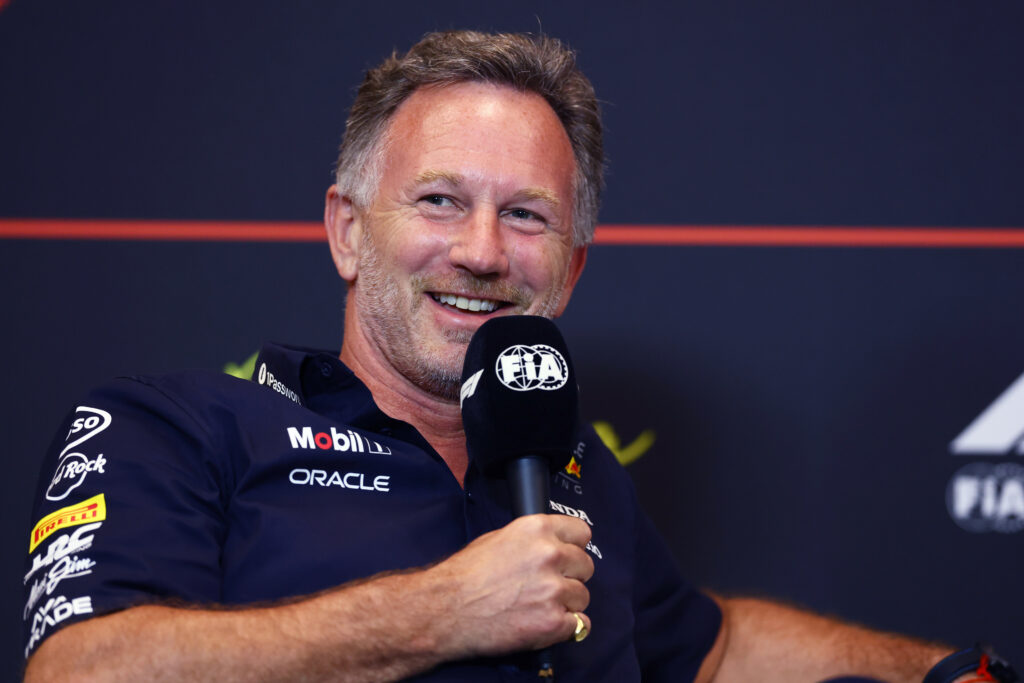
Christian Horner further explained that with both McLaren drivers successfully evading the undercut and Verstappen running out of suitable tyres before the Safety Car restart at the F1 Spanish GP, the Red Bull pit wall found themselves in a serious predicament with regard to their subsequent strategy.
Addressing their strategic choice that left the four-time world champion vulnerable at the restart, the 51-year-old remarked that they considered the set of fresh hards a better choice than the worn-out soft tyres.
“So he [Verstappen] had used all his softs and medium and then McLaren covered us with both Norris and Piastri.
“And then the Safety Car came out on [Lap] 55, which is probably the worst possible time in terms of our strategy because you’re faced with then the choice of, do you stay out on an eight-lap-old, heavily-pushed soft tyre, at which point you would get eaten up at the restart. It looked like there would be circa 10 racing laps left.
“Unfortunately, the only set of tyres that we had available, having gone on to that 3-stop strategy, was a new set of hards.
“And so our feeling was that a new set of hards was better than an eight-lap-old, heavily-degraded set of softs. So that’s what we did. We took the stop.”
Horner insists Red Bull had done everything right until the unfortunate Safety Car
Stating that he expected the McLaren drivers to surge clear of the rest of the field, Christian Horner asserted that their bold 3-stop strategy kept Verstappen in contention during the F1 Spanish GP on Sunday.
Although the Brit admitted that Verstappen wouldn’t have managed to hold onto the lead even with a successful undercut, he maintained that Red Bull had played their cards right until the ill-timed Safety Car left them on the back foot.
“Right up until that Safety Car, we were a lot closer to the McLarens through strategy than we should’ve been. They should’ve been 20 seconds up the road, maybe more. And through the strategy, it kept us in the hunt.
“We got a slight chance of an undercut at that last one. I don’t think we would’ve kept it. But we might have got track position. Up until that point, I felt that we’d done everything right. The pit stops had been strong. The strategy had been right.
“Unfortunately, the Safety Car at that point comes out. You don’t want to sit on that set of tyres because you know everybody else has taken a fresh set, and the only thing that we’ve got left is a new set of hards that you’ve got no real knowledge of.”
Even with hindsight, Horner doubtful if they should’ve left Verstappen out
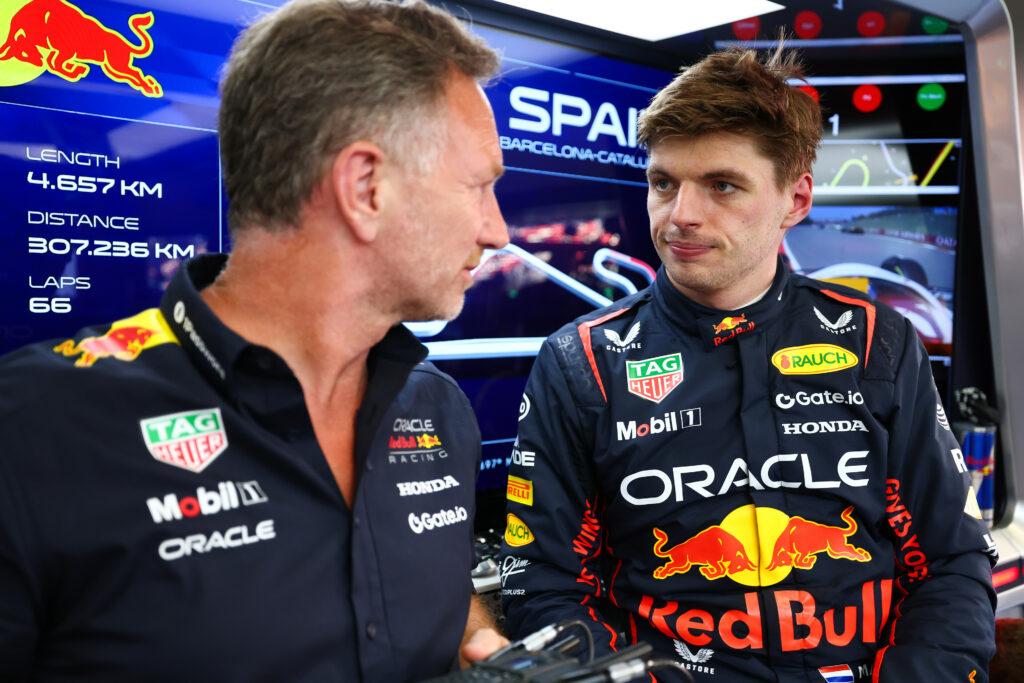
Asked if they should’ve left Verstappen out during the Safety Car period with the benefit of hindsight, the Red Bull team principal couldn’t offer a definitive answer. In fact, Christian Horner made it evident that he was unsure if the Dutchman would’ve finished on the podium at the F1 Spanish GP either way.
Acknowledging that a 3-stop approach compounds the risk of running out of tyres in the latter stages of a race in case of Safety Car interventions, Horner also elaborated on why they didn’t opt for the available third set of used soft tyres for Verstappen’s final stint.
“With 20-20 hindsight, you would’ve left him [Verstappen] out. He would’ve got passed by the two McLarens. Would he have got passed by Leclerc? It’s all subjective. You never know.
“You make the decision with the information you have at hand. As I say, the risk of going onto the 3-stop is that a Safety Car scenario in the last third or quarter of the race exposes you.
“[Verstappen didn’t change to the final set of used softs] because the initial set had been used. Obviously, it had done qualifying. And then it does all the laps to the grid and does all the race starts. It essentially had, I think, seven or eight laps on it.
“So you face the choice of a brand new set versus an eight-lap used set that has taken a bit of a pounding.
“With 20-20 hindsight, it’s very easy to say, stay out. Would he have finished third, fourth? Who knows! But you can only go with the information you have at hand.”


